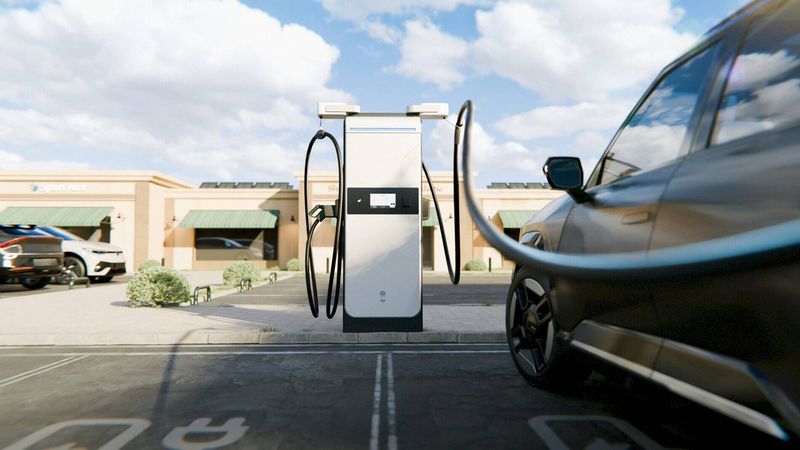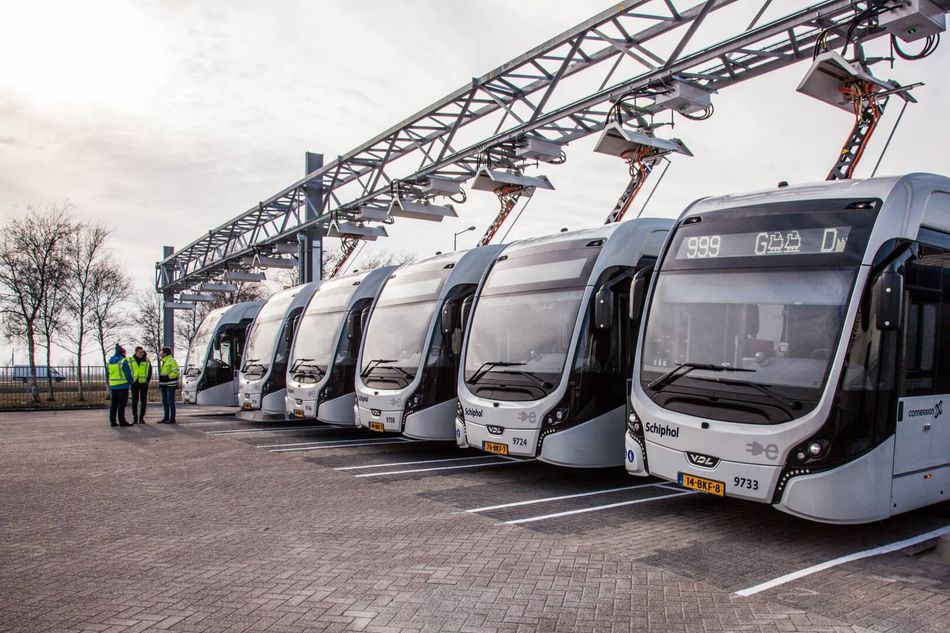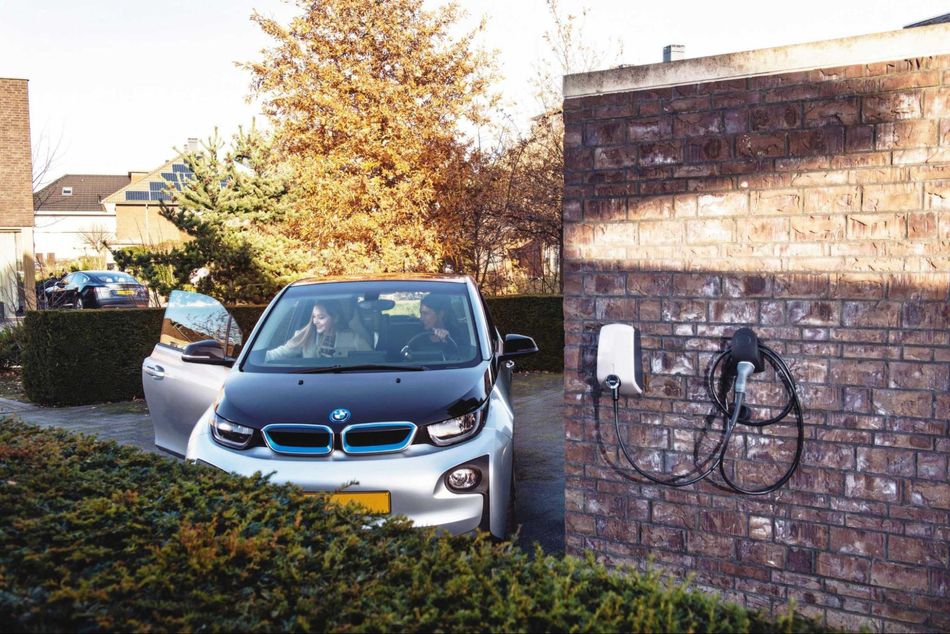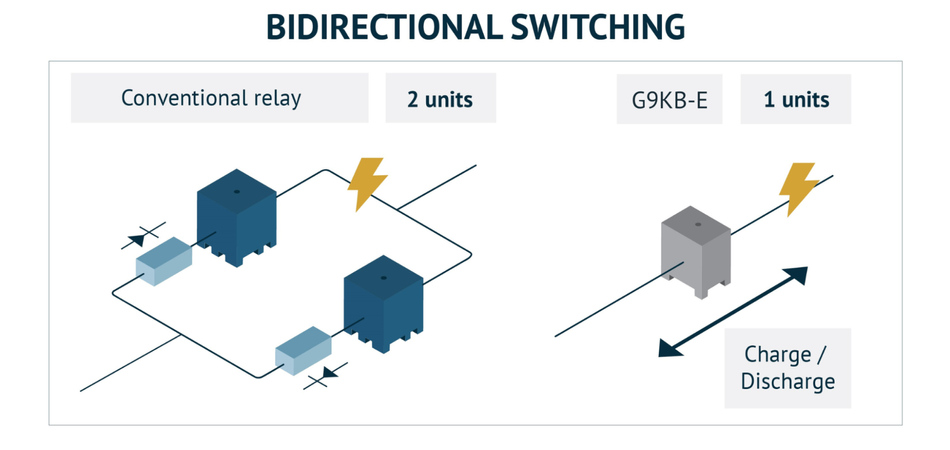Enabling bidirectional charging for electric vehicles with high-capacity power relays
Bidirectional charging introduces exciting possibilities for EVs to power entire buildings but necessitates meticulous control of energy flow. Components like high-capacity relays play a critical role, ensuring safe and efficient power transfer through precise switching and circuit isolation.

Image credit: Wallbox
As the demand for sustainable energy solutions intensifies, the role of electric vehicles (EVs) extends beyond transportation. The concept of bidirectional charging is becoming increasingly important as it allows electric vehicles (EVs) to not only receive power but also to supply it back to the grid or other connected systems when needed. This technology is significant because it helps ensure grid stability and sustainability by effectively turning EVs into mobile energy resources.
In this article, we explore bidirectional charging, detailing its integration with modern EVs, and introduce the Omron G9KB-E high-capacity power relay.
Foundations of bidirectional charging
bidirectional charging is a technology that equips EVs with the capability to both receive and supply electrical energy. This system integrates into the vehicle's charging infrastructure, allowing the EV battery to act as a dynamic energy storage unit. Unlike traditional charging, which is a one-way flow of electricity from the grid to the vehicle, bidirectional charging facilitates a reversible flow, where energy can be returned to the grid or directed elsewhere as needed.
The mechanics of bidirectional charging involve several key components: an inverter, a bidirectional charger, and intelligent software that manages the flow of electricity. The inverter is crucial as it converts the DC power stored in the EV’s battery into AC power that can be fed back into the grid. Conversely, it also handles the conversion of AC from the grid into DC to charge the vehicle’s battery.
A critical aspect of this technology is regulating power flow, which is controlled by sophisticated software algorithms. These systems ensure that energy transfer is efficient and occurs at optimal times, such as during periods of low demand when energy prices are lower and the grid is less strained. This capability requires a seamless and continued interaction between the vehicle, charging station, and the broader power grid, necessitating robust communication protocols to maintain synchronization and ensure safety. Bidirectional technology broadens the functionality of EVs and enhances the overall resilience and efficiency of the electrical grid. The following sections will explore these aspects in more detail.
Bidirectional charging applications
Integrating bidirectional charging with EVs is a complex process that enhances the vehicle's ability to manage energy. This integration can be configured for many applications, each serving different needs.
The core bidirectional power applications include:
Vehicle to Load (V2L): Allows EVs to power external devices, useful for camping or emergencies, utilizing the EV's battery as a portable power source.
Vehicle to Home (V2H): Enables EVs to power homes during peak hours, reducing electricity costs by storing energy during off-peak times.
Vehicle to Building (V2B): Similar to V2H but powers entire buildings, offering emergency backup during outages.
Vehicle to Vehicle (V2V): Allows one EV to charge another, useful in emergencies when no charging stations are available.
Vehicle to Grid (V2G): Allows EVs to feed energy back into the grid, stabilizing it during peak demand or sudden spikes. Standardized under ISO 15118, V2G enables secure, efficient interaction between EVs and the grid.[1]
Each of these methods leverages EVs' inherent storage capability to distribute electricity where it's needed most, thereby enhancing the overall efficiency of our energy use. As these technologies mature, they promise to make EVs not just consumers of power but critical components of our energy infrastructure.

Benefits of Bidirectional Charging
Bidirectional charging offers a multitude of advantages that contribute to both individual cost savings and broader environmental benefits:
Cost Savings: By utilizing bidirectional charging, EV owners can operate their vehicles more economically. Charging an EV during off-peak hours when electricity rates are lower and then using that energy during peak hours can significantly reduce electricity bills. Some estimates suggest that users of this technology can save approximately $150 annually.[2] The amount may seem very modest at present, but as the technology matures, these savings are very likely to increase.
Emergency Power: In the event of a power outage, bidirectional charging allows EVs to supply power back to the home or grid, serving as a backup power source. This can be crucial for maintaining critical functions in residential and commercial settings during emergencies.
Grid Stability: This technology plays a crucial role in stabilizing the electrical grid by providing energy back during demand peaks. Instead of solely relying on grid-supplied electricity during high-demand periods, energy can be sourced from EVs, which act as mobile storage units. This reduces the risk of grid overload and enhances the reliability of the power supply.
Renewable Energy Integration: Bidirectional charging facilitates greater use of renewable energy by storing excess generated energy in EV batteries during peak production times. This stored energy can then be used when solar or wind production is low, smoothing out the fluctuations in renewable energy availability.
Reduced Emissions: By improving energy efficiency and promoting the use of renewables, bidirectional charging may help reduce a grid's overall carbon footprint. As more renewable energy sources are integrated into the grid, the reliance on fossil fuels decreases, leading to lower greenhouse gas emissions.
These benefits showcase how bidirectional charging supports individual EV owners and contributes significantly to creating a more resilient, efficient, and sustainable energy ecosystem.

Bidirectional Charging with Omron G9KB-E High-Capacity Power Relay
Bidirectional relays play a crucial role in managing power flow in charging systems, enabling efficient energy transfer between electric vehicles and the grid or home. This capability allows EVs to charge from the grid and supply stored energy back, unlocking a range of V2X applications. Notably, relays like the Omron G9KB-E can replace two unidirectional relays, simplifying system design, reducing components, and enhancing reliability.

By managing both incoming and outgoing power flow with a single relay, the G9KB-E ensures a more streamlined and effective control mechanism. Through precise control of power flow, the relay helps maintain stability and efficiency within the energy system, preventing overloading and ensuring desired power distribution.
Benefits of Using Bidirectional Relays in EV Charging Stations
In bidirectional charging systems, maintaining safe and efficient energy flow is critical. Relays are crucial components in managing power flow and safeguarding the charging system. Their functionality is integral to the system's overall reliability, ensuring the safety of both the vehicles and users. Here are some ways in which relays enable the charging process:
Bidirectional Power Flow Control: Relays can potentially manage the flow of power in both directions during bidirectional charging (EV to grid or home) by selectively switching circuits.
Component Reduction: Bidirectional relays can replace two unidirectional relays, streamlining system design and lowering costs.
Safe Connection/Disconnection: Relays act as a physical switch, allowing the charger to safely connect and disconnect the EV's battery. This ensures no power flows when the car is not plugged in or during emergencies.
Isolation and Switching: In chargers with variable voltage outputs for different EV types (e.g., high-voltage for trucks and low-voltage for cars), relays provide isolation between these outputs, preventing accidental mixing of voltages.
Emergency Shutdown: In case of fault conditions like ground faults, current surges, overheating, overcharging, or short circuits, relays can quickly interrupt the power flow, protecting the charger, EV battery, and users.

Omron G9KB-E High-Capacity Bidirectional Power Relay
The G9KB is a family of high-capacity power relays by Omron that are vital components in enhancing energy management for bidirectional charging systems. The G9KB relays are designed for both standard and high-power applications, making them a versatile choice for various energy systems.
The Omron G9KB-E, a Single-Pole Single-Throw Normally-Open (SPST-NO) power relay, is the high-capacity model of the G9KB series. It can handle up to 800 VDC and 100 A, making it ideal for demanding energy management tasks.
Here are some key features of the Omron G9KB-E high-capacity power relay:
Max Switching Voltage: Up to 800 VDC, making it suitable for high-voltage applications.
Max Switching Current: Capable of handling up to 100 A, ensuring it can manage substantial power loads.
Bidirectional switching: Bidirectional switching feature to replace two unidirectional relays with just one for bidirectional current applications.
Wide Operating Temperature Range: Operates efficiently from -40°C to 85°C, making it reliable in diverse environmental conditions.
Durability: The relay provides high electrical durability, guaranteeing at least 6,000 operations at 800 VDC and 18 A, 300 operations at 500 VDC and 100 A, 100 operations at 600 VDC and 100 A, and 10 operations at 800 VDC and 50 A (under specified measurement conditions of 1 second ON, 9 seconds OFF at 85°C and 25% to 75% relative humidity conforming to the conditions of JIS C 5442 test methods). This range of durability ensures reliable performance under a variety of load conditions.
Safety standard compliance: The relay meets safety standards such as UL 60947-4-1 and EN IEC 61810-10, designed for solar and energy storage system components.
Effortless PCB Installation: Safer and lighter than traditional gas-filled relays, with PCB mountings that eliminate the need for screw terminals and reduce manual labor costs.
Maximized efficiency: Low contact resistance for minimal voltage drop and heat generation to enhance system efficiency.
Further applications of the G9KB-E Relay
The G9KB-E power relay is instrumental in the practical implementation of bidirectional charging, significantly enhancing these systems' overall efficiency and reliability. Its role in facilitating smoother and safer energy transitions makes it a key component in advancing smart energy management solutions.
While we have focused on its critical function in EV bidirectional charging, the versatility of the G9KB-E Relay allows it to be used in various other settings, including:
Energy Storage Systems: The relay is integral in systems that store and manage renewable energy.
V2X Applications: It supports various vehicle-to-everything (V2X) interactions, including V2H, V2B, etc.
DC Household Appliances: The relay can also be adapted for use in direct current appliances within a smart home environment.
For more detailed information on the G9KB-E power relay or to inquire about purchasing options, interested parties are encouraged to visit the product information page.
Conclusion
In conclusion, bidirectional charging represents a significant advancement in energy management, leveraging electric vehicles as mobile energy sources. Despite its challenges, such as technical complexity and battery wear, the benefits, including cost savings, reduced emissions, and increased grid stability, are substantial.
Continued innovation and supportive regulations are essential for its advancement. The Omron G9KB-E high-capacity power relay plays a crucial role in enhancing the efficiency and safety of bidirectional charging systems, making it a key component in the transition to a more sustainable energy future.
References
[1] ISO 15118-1:2019, Road vehicles — Vehicle to grid communication interface, ISO, [Online], Available from: https://www.iso.org/standard/69113.html
[2] City-Wide Modeling of Vehicle-to-Grid Economics to Understand Effects of Battery Performance, ACS Sustainable Chem. Eng. 2021, 9, 44, 14975–14985, Publication Date:October 26, 2021, https://doi.org/10.1021/acssuschemeng.1c05490
[3] OMRON Launches "G9KB" Relay for High Capacity Electricity Storage Systems, 11 May 2022, Omron, [Online], Available from: https://www.omron.com/global/en/media/2022/05/c0511.html
About OMRON Electronic Components
OMRON Electronic Components is a leading manufacturer and provider of advanced electronic components. Extensive product groups include relays, switches, connectors, MEMS flow sensors, pressure...

